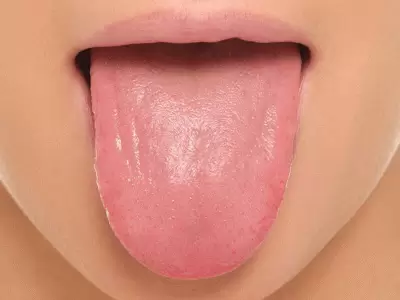Tongue Base Procedures in Snoring and Sleep Apnea
The tongue Base is one of the most important regions that cause problems in patients with snoring and sleep apnea. In cases where the muscles keeping the tongue in the frontal region get loose during sleep , causing the tongue to slip backward and narrow the respiratory tract, the mucosal surfaces approaching each other and vibrating with the effect of turbulence cause snoring and if the air passage is completely closed, apnea develops.
Especially in patients with moderate and severe sleep apnea, tongue base problems are accompanied by problems in the soft palate region. In such cases, treatments intended for the problems in the both regions are required to be planned together.
Especially if overweight patients or those with a high body mass index (BMI) lose weight up to 10% of their body weights, complaints arising from the tongue base region are likely to decline. Therefore, if body mass index is high in patients found to have a problem limited to their tongue base region, weight loss techniques should definitely be tried before surgical planning.
In cases where patients with an obvious soft palate pathology have moderate or severe apnea, a surgical intervention intended for the nose and palate can be made in advance.
In both groups, a positive airway pressure mask (CPAP) should be used if needed, in order to prevent apnea and speed up the metabolism during weight loss program.
Problems detected in the tongue base region can vary, involving different conditions, in which, for example, the dimensions of the tongue and tongue base can be greater than normal; the tongue can be positioned behind due to a small lower jaw or a lower jaw located behind; or the tongue can slip backward and block the air passage due to muscle relaxation during sleep.
In all patients diagnosed with sleep apnea , sleep endoscopy should be performed in addition to the standard ENT examination. In sleep endoscopy after providing a special anesthesia flexible endoscopy is performed through the nose and the level and content of the problem is assessed to determine the optimal surgical approach for the solution of the existing problem.
Due to its location, the tongue base is a region, where surgical intervention can be challenging for both the patient and surgeon and where postoperative problems and complications risks are relatively higher. There are different surgical techniques applied to the tongue base.
Reducing the Tongue Base Volume
Surgical interventions intended for reducing the volume of the tongue base are made in patients with an obstruction problem in their respiratory tracts due to excessively large tongue base, identified as a result of examination and sleep endoscopy. Although the principle of the surgical procedure is identical, different approaches have been defined. For surgical intervention, the tongue base region can be accessed from the outside through the neck or through the mouth. As a result of the developments in medical technology, the approach of accessing through the neck is today generally not preferred.
Radiofrequency Applications on the Tongue Base
Radiofrequency applications on the tongue base are based on the principle of reducing the tissue volume by means of the healing of heat damages, created using radiofrequency energy in soft tissue of the tongue base, through the contraction and hard scar tissue formation. The most important disadvantage of this procedure, which can also be carried out under local anesthesia at a doctor's office, is that it requires 4 to 6 repeated sessions for observable favorable results. In sleep apnea patients diagnosed with enlarged tongue base, this technique can be used in conjunction with surgical interventions in the nose and/or palate regions during the same session. In radiofrequency treatment the risk of complications is lower and postoperative problems are less compared with other procedures carried out in this region; however, the success rate is lower as well.
Volume Reduction with Laser or Coblation
It is a procedure involving the reduction of the volumes of soft tissue in middle of the tongue base, with the aid of a laser or Coblator device applied through the mouth. This procedure carried out with intent to remove soft tissues from the tongue mucosa is referred to as SMILE (Submucosal minimally invasive lingual excision). During the same operation, the lymph tissue of the tongue base (tongue base tonsils) and some throat structures can be reduced, as well. As a precaution against the risk of blockage in the air passage due to postoperative tissue swelling or bleeding, a tube may be required to be temporarily placed into the windpipe through the neck (Tracheotomy).
Robotic Tongue Base Surgeries
After the development of equipment suitable for use through the mouth, robotic technology has begun to be used successfully in surgical interventions in hard-to-access areas, where field of view is too limited such as the tongue region. The details about the subject are given under the topic title of Robotic Surgery for Sleep Apnea.
Advancing the Muscle That Pulls the Tongue Forward
It is a technique preferred in patients, whose tongues slip backward and cause blockage in the air passage due to relaxation of the muscles during sleep, and loss of complete tightness during REM sleep. With this technique, the bone area, where the genioglossus muscle (the most important muscle that pulls the tongue forward) is attached to the inner section of the lower jaw bone, is separated from the lower jaw bone, pulled forward, and then fixed in its new position, and by this way, the tongue is ensured to proceed forward and the air passage behind the tongue is widened.
Suspension of Hyoid Bone—To Which the Tongue Muscles Are Attached)—With Suture
The horseshoe-shaped bone called "hyoid bone" is located the central part of the neck, between the tongue base and the voice box. Resistance of the air passage, behind the tongue to the air flow depends on the genioglossus muscle and the muscles attached to the hyoid bone. Looseness of the tissues in this region increases the risk of collapse in the air passage, due to the vacuum effect that develops during respiration. This technique is based on the principle in which the hyoid bone is connected to the lower jaw bone or the thyroid cartilage in the neck, by means of suspension sutures, in such a way as to ensure that the muscles attached to this bone are tightened so that the air passage under the tongue base is prevented from collapsing.
Suspending the hyoid bone towards the lower jaw bone with sutures, and tightening it by pulling forward is a more acceptable approach, particularly in patients diagnosed with the condition, in which the tongue base slips backwards.
Suspension of the Tongue Base with Sutures
It is another surgical procedure carried out in patients diagnosed with a condition, in which the tongue blocks the air passage by sliding backward during sleep. In this technique, the inner part of the lower jaw bone is accessed through the floor of the mouth, or through an incision made under the chin; and then a screw is inserted into the bone; afterward, with the help of e special needle, an insoluble suture is looped through the tongue base and is tightened in a way to pull the tongue base forward, and then is connected to the screw. After this surgical procedure carried out to prevent the tong from slipping backward, the patient may experience swallowing difficulties for a few days.
This most important complication of this approach is postoperative tissue swelling (edema). The operation that does not cause any significant restriction in tongue's movements, partial restricts the movements of the tongue's tip. In the tongue suspension procedure, although early period results are good, the obtained effect is lost in the course of time because of the dislocation of the suture in the tissue.






Comment
Your Contact Information will not be shared in any way. * Required Fields